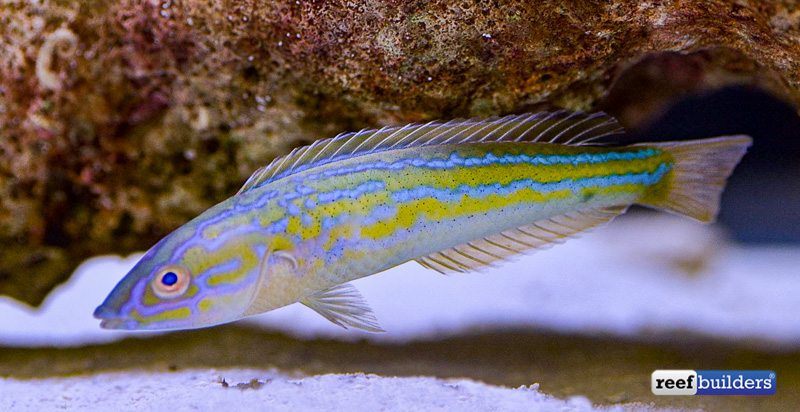With last week’s formal description of Pseudojuloides labyrinthus, it would be an appropriate opportunity to share just how this new species was noticed. The history for this fish goes back to the research that was under way for the description of another fish in the genus, Pseudojuloides edwardi.
The first specimen of P. edwardi was found through the aquarium hobby the previous year, in 2014. Benjamin Victor, who was working on several descriptions of Pseudojuloides species, was on the lookout for paratypes for P. edwardi and due to this species’ relatively irregular appearance, it took some time for secondary specimens to appear.
Fast forward to the spring of 2014, and a trio of Edward’s pencil wrasses appeared stateside. The trio was a male and two females. These subsequent specimens were sent to Victor for further analysis. Part of that analysis involved getting an mtDNA COI sequence. The results that came back were surprising. The male and one of the females genetic work came back, and as expected matched the previous edwardi collected.

However, the third specimen, one of the females, showed a significant difference from, not just the edwardi, but also any other Pseudojuloides previously sequenced. There was a new pencil wrasse unknown to anyone yet, found through it’s genetic differences, swimming amongst P. edwardi in the waters of Kenya!
Like the majority of other species of Pseudojuloides the females are predominantly pinkish-red. The exciting part was nobody knew what this new male would look like, as pencil wrasses usually go through a remarkable physical transformation when transitioning from female to male.
Another few months would have to wait. In a joint effort by Jason Edward of Greenwich Aquaria and Michael Stern of NY Aquatic, the quest of acquiring as many pencil wrasse specimens from Kenya ensued. Finally, in April of 2015, the search paid off, and a male specimen made it’s awaited appearance amidst plenty of other Kenyan pencil wrasses of various species.

This male was bright green with three lateral stripes like severn’s pencil wrasse, maze-like facial markings, but lacking any hooded appearance. This was the first male, and would be used for the holotype, the previously collected female would serve as the paratype. Another case where the aquarium industry was pivotal to the discovery and description of a new species.
Now to take a moment to look at the physical features of the labyrinthus female. While in many ways very similar to other females of the genus, Pseudojuloides labyrinthus stands out in a few key features. Most notably is how deep red the eyes are compared to the more orange colored eyes of other female pencil wrasse species. Also, the pinkish-red coloring of the body ends earlier on the snout of this species than in other species, giving a white moustached look above the mouth.

Going by these subtle, but still noticeable cues, I was personally able to acquire one of these females that came in at the same time as the male, for my own tank. In a tank full of other female Pseudojuloides, female labyrinthus really do stand out as different.
By providing conditions as one would any of the more commonly encountered pencil wrasses, or their leopard wrasse cousins, I was rewarded in having my female Pseudojuloides labyrinthus transition into a terminal male in September of 2015. This new male was able to serve as the pictured example of the terminal phase male in the JOSF submission that described the fish.
On a lighter note, since this fish “flew under the radar” so to speak, it has not been given a “common name”. Personally, I greatly prefer scientific names to common names, as it avoids confusion when discussing fish (I’m talking about you Christmas wrasse), I do understand the reality of common names, in that they will be used.

Elsewhere I have seen the name Labyrinthine wrasse proposed, but I think we as hobbyists can be a little more creative than that. A few suggestions I can think of as possibilities: Maze wrasse, it’s simple and maze and labyrinth are synonomous; or perhaps the Minotaur wrasse, the minotaur of Greek mythology lived in the labyrinth (minotaur was also in the running as being used in some form for it’s official name).
The Daedalus wrasse, since Daedalus designed the labyrinth; the Bowie or David Bowie wrasse, in memoriam of the rock-god that we lost this year who also happened to star in the creepy children’s movie “Labyrinth”; or heck, even after the aquarist that has kept the only known non-preserved specimen for over a year, hey wait, that would be me, Engel’s wrasse does have a nice ring to it.
I’d be curious to see what name you guys think should be used in the comments below.
This is a guest contribution by TJ Engels, one of the marine fish specialists at Greenwich Aquaria.




